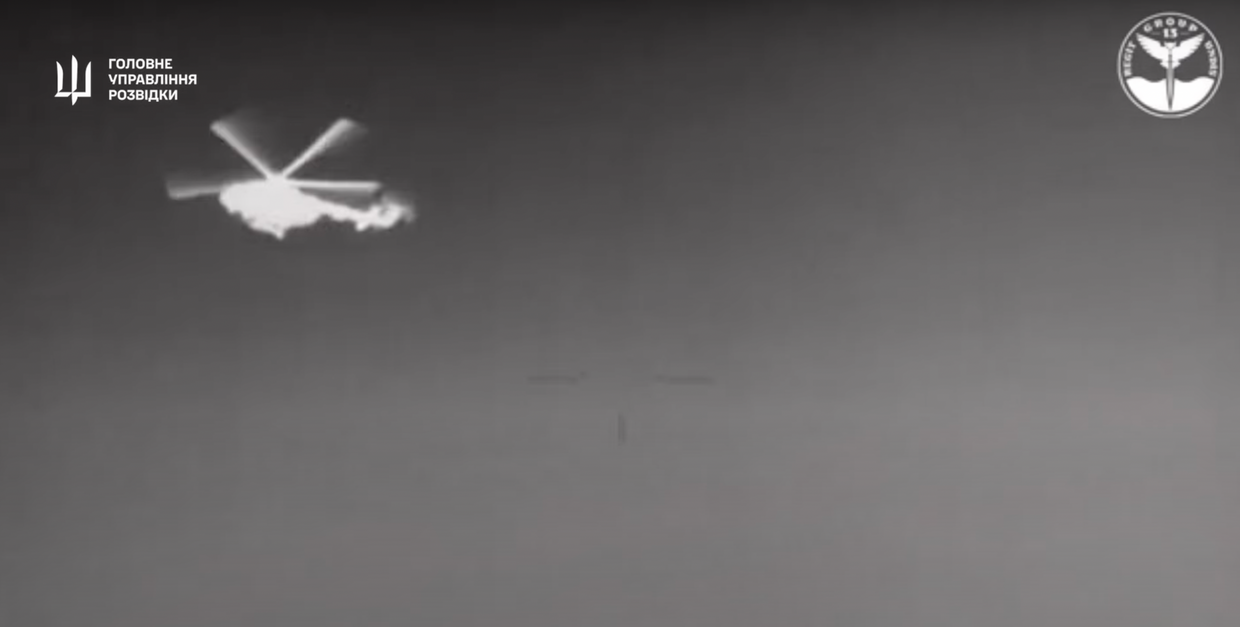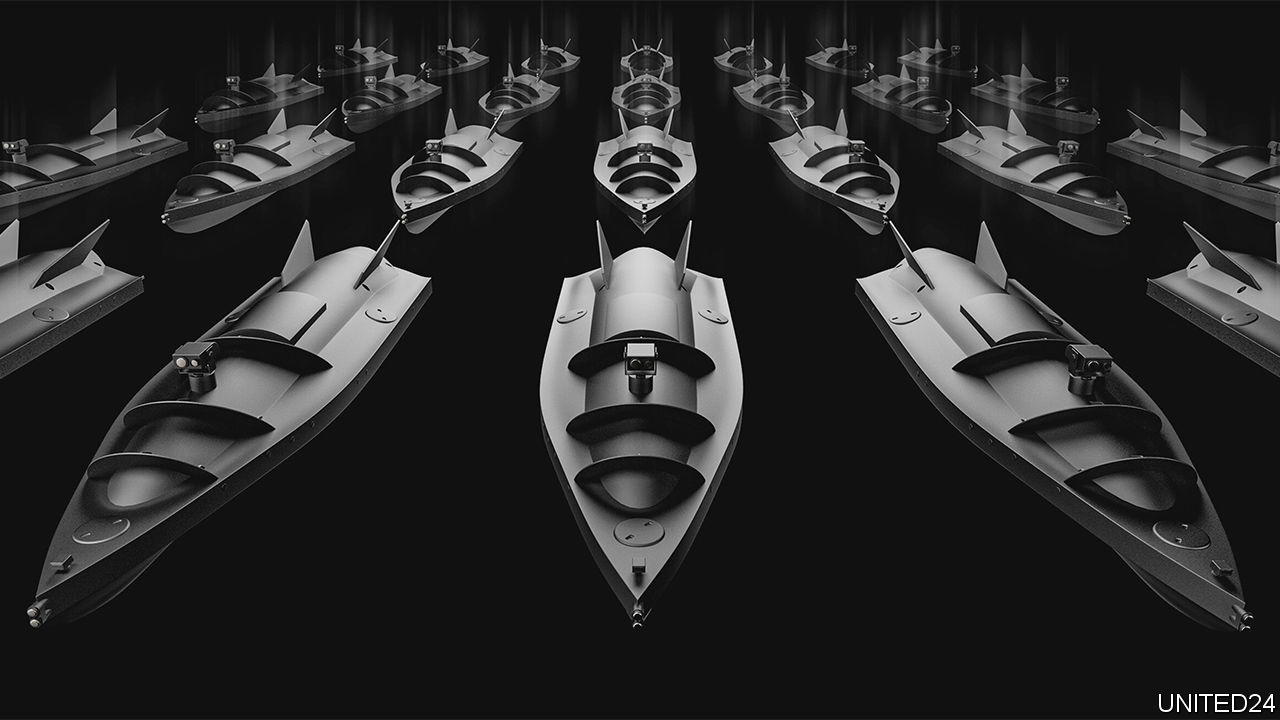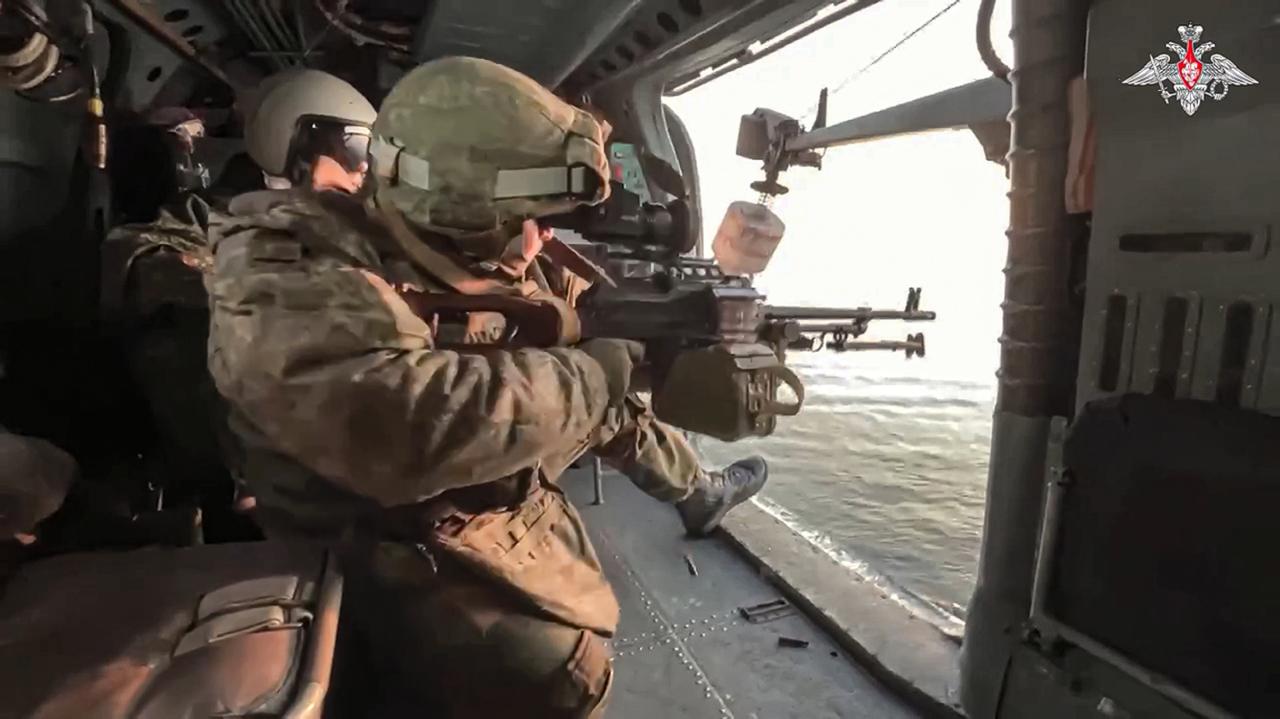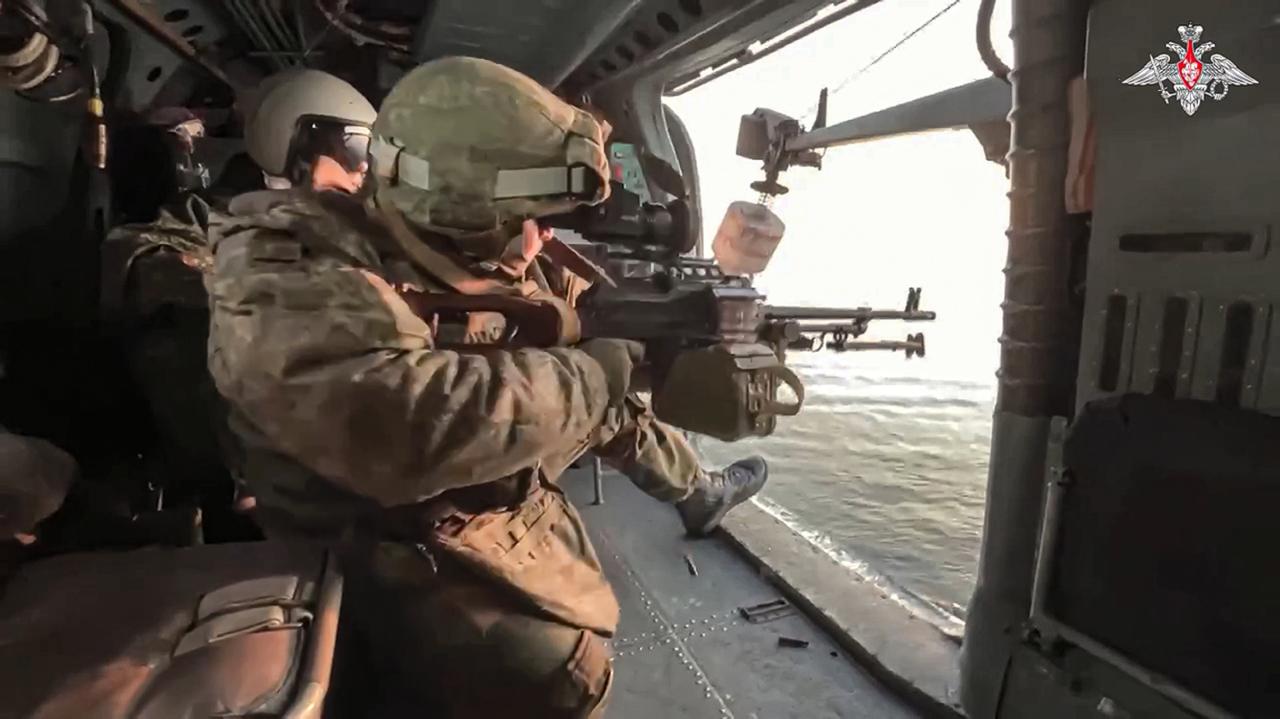Ukrainian sea drones are changing naval warfare. These unmanned vessels, ranging from small, expendable craft to more sophisticated autonomous systems, are proving surprisingly effective against larger, more expensive warships. Their low cost, adaptability, and potential for swarm tactics are reshaping maritime conflict, forcing a re-evaluation of naval strategies and defenses.
This exploration delves into the technological advancements behind these drones, their operational deployments, their impact on the ongoing conflict, and the international implications of this evolving technology. We’ll examine their design, capabilities, limitations, and the countermeasures being developed to combat them.
Ukrainian Sea Drone Technology
Ukraine’s innovative use of unmanned surface vessels (USVs), commonly referred to as sea drones, has significantly impacted the ongoing conflict. These relatively inexpensive and easily deployable systems have proven surprisingly effective against larger, more expensive naval assets. This article explores the technological aspects, operational deployments, impact, and future implications of these drones.
Ukrainian Sea Drone Designs and Functionality
Various models of Ukrainian sea drones exist, ranging from smaller, simpler designs to more sophisticated systems. Common features include a modular design allowing for adaptable payloads and the incorporation of readily available commercial components for ease of maintenance and repair. Many are designed for one-way missions, sacrificing recovery capabilities for increased payload capacity and range.
Propulsion Systems and Operational Range
Propulsion systems vary depending on the drone model, with common choices including outboard motors and jet propulsion. Outboard motors offer simplicity and ease of maintenance but may be less efficient at higher speeds. Jet propulsion provides greater speed and maneuverability but is generally more complex and expensive. Range is highly dependent on the size of the drone, propulsion system, and payload, with reported ranges varying from tens to hundreds of kilometers.
Onboard Sensors and Communication Systems
Navigation and target acquisition rely on a combination of GPS, inertial navigation systems (INS), and various sensors. These may include cameras, radar, and potentially other sensors depending on the specific mission requirements. Communication with the drone is typically achieved via satellite links or other long-range communication systems, enabling remote control and real-time data transmission. The exact communication protocols and security measures are not publicly available for security reasons.
Comparison of Ukrainian Sea Drone Specifications
| Drone Type | Payload Capacity (kg) | Speed (knots) | Endurance (hours) |
|---|---|---|---|
| Example Drone 1 (Hypothetical) | 500 | 20 | 12 |
| Example Drone 2 (Hypothetical) | 200 | 30 | 6 |
| Example Drone 3 (Hypothetical) | 1000 | 15 | 24 |
| Example Drone 4 (Hypothetical) | 300 | 25 | 8 |
Operational Deployment and Tactics of Ukrainian Sea Drones
Ukrainian sea drones have been deployed in various scenarios, including attacks on naval vessels, disruption of maritime operations, and reconnaissance missions. Tactics often involve swarming attacks, utilizing multiple drones to overwhelm defenses. The use of low-observable designs and evasive maneuvers helps to evade detection and interception.
Examples of Successful and Unsuccessful Missions
While specific details of many missions remain classified, reports suggest successful attacks on Russian warships and support vessels. Unsuccessful missions are likely due to factors such as countermeasures, mechanical failures, or inaccurate targeting. The precise details of these missions remain largely undisclosed for operational security reasons.
Ukrainian sea drones are making waves, proving their effectiveness in naval warfare. It’s interesting to compare their tactical applications to the dazzling, large-scale displays seen at the shanghai drone show , where coordinated swarms create breathtaking aerial spectacles. While vastly different in purpose, both highlight the innovative and evolving capabilities of drone technology. The future of drone warfare, however, will likely be shaped more by the Ukrainian sea drone’s practical impact.
Deployment and Control Tactics
Deployment methods can range from launching from shore-based facilities to deployment from smaller vessels. Control is typically exercised remotely, with operators guiding the drones to their targets. Countermeasures against detection and interception involve the use of stealth technologies, evasive maneuvers, and potentially decoys.
Operational Sequence Flowchart
A typical mission involves pre-mission planning, launch, navigation to target, target engagement, and post-mission analysis. This process is complex and involves various stages of coordination, data analysis, and risk assessment. Detailed flowcharts are not publicly available due to security considerations.
Illustrative Flowchart Description: The flowchart would begin with mission planning, detailing target selection, route planning, and countermeasure considerations. This would be followed by launch, navigation guided by GPS and INS, and sensor data acquisition. Upon target acquisition, the drone would execute its assigned task (e.g., explosive delivery, data collection), followed by self-destruction or return (if applicable). Post-mission analysis would then evaluate the mission’s success and inform future operations.
Impact and Effectiveness of Ukrainian Sea Drones

The impact of Ukrainian sea drones has been substantial, inflicting damage on Russian naval assets and disrupting their operations. The cost-effectiveness of these drones, compared to traditional naval weapons, has also been a significant factor in their success.
Evidence of Damage Inflicted
Reports of damage include damaged or sunk vessels and disruption of maritime supply lines. The exact extent of the damage is difficult to verify independently due to the ongoing conflict and information control by both sides.
Effectiveness Compared to Other Naval Weapons
Sea drones offer a cost-effective alternative to more expensive weapons systems like missiles or torpedoes, particularly for attacks on smaller, less heavily defended targets. However, they are not a replacement for all naval weaponry, and their effectiveness is dependent on several factors including environmental conditions and enemy countermeasures.
Limitations and Vulnerabilities
Limitations include range, payload capacity, vulnerability to electronic warfare, and susceptibility to physical damage. Their effectiveness is also affected by weather conditions and the sophistication of enemy countermeasures.
Strategic Impact of Sea Drone Usage
- Disruption of Russian naval operations in the Black Sea.
- Damage to Russian warships and support vessels.
- Increased cost of Russian naval operations due to the need for countermeasures.
- Demonstration of the effectiveness of low-cost, asymmetric warfare tactics.
International Implications and Future Developments
The successful use of Ukrainian sea drones has significant implications for naval warfare globally, highlighting the potential for low-cost, asymmetric warfare tactics. Future developments may include increased autonomy, improved sensor capabilities, and enhanced countermeasure resilience.
Potential for Future Advancements
Future advancements might include the integration of artificial intelligence for improved autonomy, the use of more advanced propulsion systems for increased range and speed, and the development of more sophisticated sensor packages for enhanced target acquisition. Increased payload capacity and improved countermeasure capabilities are also likely areas of focus.
Role of International Partners
International partners have played a crucial role in providing technology and support for Ukrainian sea drone programs. The exact nature of this support is often kept confidential for security reasons.
Ukrainian sea drones are proving surprisingly effective, showcasing how smaller, cheaper tech can pack a punch. Think of it like a real-world, naval version of the games in the vip 3 squid game , where resourcefulness and clever tactics matter more than sheer size. The impact of these drones on naval warfare is definitely worth keeping an eye on, as their development continues.
Timeline of Ukrainian Sea Drone Technology
A precise timeline is difficult to establish due to the classified nature of the programs, but the development likely accelerated significantly in response to the ongoing conflict. Initial designs were probably based on commercially available components, and these have been progressively upgraded and refined over time.
Illustrative Timeline Description: The timeline would begin with early experimentation and prototype development, possibly starting several years before the conflict. This would be followed by a period of rapid development and deployment driven by the conflict’s demands. Finally, a phase of ongoing refinement and technological upgrades based on operational experience would be shown.
Countermeasures and Defense Strategies Against Sea Drones
Opposing forces have implemented various countermeasures to neutralize Ukrainian sea drones. These range from electronic warfare techniques to physical interception methods.
Countermeasures Employed
Countermeasures include electronic jamming to disrupt communication and navigation, the use of nets and other physical barriers to capture or disable drones, and the deployment of anti-drone weapons systems.
Comparison of Defensive Strategies
Different strategies have varying levels of effectiveness depending on the specific drone design and the environment. Electronic warfare measures may be effective against communication systems, while physical interception methods may be more successful against slower, less maneuverable drones.
Ukrainian sea drones are making waves in military tech, showcasing impressive capabilities. It’s a far cry from the dazzling spectacle of a civilian drone display, like the amazing shanghai new year drone show , which highlights the potential of drones for entertainment. But both examples demonstrate the rapidly evolving technology and diverse applications of unmanned aerial vehicles. The Ukrainian drones, while focused on defense, still represent cutting-edge drone innovation.
Technological Advancements for Drone Resilience, Ukrainian sea drone

Improved resilience against countermeasures requires advancements in several areas, including hardened communication systems, improved electronic countermeasures, and more robust physical designs. Advanced autonomous navigation and evasion maneuvers are also crucial.
Detection, Tracking, and Neutralization Process
Illustrative Process Description: The visual representation would depict a layered approach. First, sensors (radar, sonar, visual) detect the presence of a sea drone. This triggers tracking systems to monitor its movement and predict its trajectory. Based on this information, a countermeasure is selected, which could involve electronic jamming, a physical interception attempt using nets or boats, or deployment of anti-drone weaponry.
Successful neutralization is then confirmed, followed by assessment and potential adaptation of countermeasures based on the effectiveness of the response.
Summary

The rise of Ukrainian sea drones highlights the disruptive potential of relatively inexpensive, autonomous technology in modern warfare. Their effectiveness challenges traditional naval power dynamics and underscores the need for innovative defensive strategies. As technology continues to evolve, the role of these unmanned vessels in future conflicts is certain to grow, demanding ongoing adaptation and innovation from all naval forces.
Questions and Answers
How are Ukrainian sea drones powered?
Various propulsion systems are used, including electric motors, internal combustion engines, and potentially even hybrid systems, depending on the drone’s size and mission requirements.
What kind of sensors do they use?
They utilize a range of sensors for navigation and target acquisition, such as GPS, inertial navigation systems, cameras, radar, and potentially sonar, depending on the model and mission.
Are they reusable?
Some are designed for single-use missions, while others are potentially recoverable and reusable, depending on their complexity and design.
Who provides the technology for these drones?
Ukraine develops its own technology, but also receives support and components from international partners.
